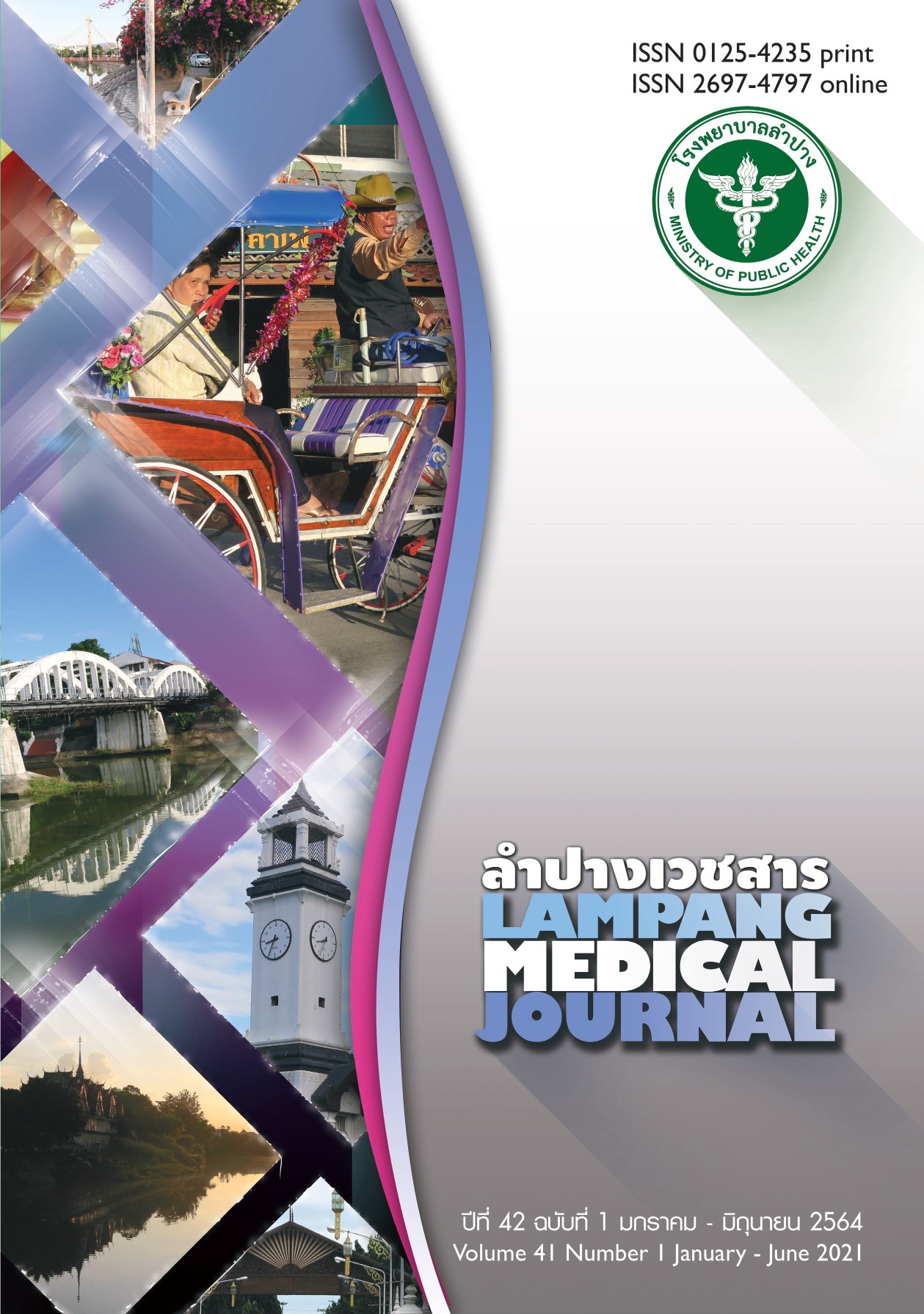Pure Traumatic Posterior Dislocation of the Atlantoaxial Joint without Associated Odontoid Fracture and Neurological Deficit: a Case Report, Reduction Technique and Literature Review
Main Article Content
Abstract
Pure traumatic posterior atlantoaxial dislocation without fracture of the odontoid process is an extremely rare condition. The treatments vary and remain controversial. We reported a 40-year-old woman who sustained this kind of dislocation. Closed reduction in awakening was achieved using intravenous analgesia and fluoroscopy. Atlantoaxial instability was demonstrated after anatomical reduction and then managed by posterior screw-rod instrumentation and fusion. One-year postoperatively, the patient had painless stable spine without neurological deficit or evidence of implant failure. This article aimed to describe reduction technique and review the literatures about treatment outcomes of this injury.
Article Details
บทความที่ส่งมาลงพิมพ์ต้องไม่เคยพิมพ์หรือกำลังได้รับการพิจารณาตีพิมพ์ในวารสารอื่น เนื้อหาในบทความต้องเป็นผลงานของผู้นิพนธ์เอง ไม่ได้ลอกเลียนหรือตัดทอนจากบทความอื่น โดยไม่ได้รับอนุญาตหรือไม่ได้อ้างอิงอย่างเหมาะสม การแก้ไขหรือให้ข้อมูลเพิ่มเติมแก่กองบรรณาธิการ จะต้องเสร็จสิ้นเป็นที่เรียบร้อยก่อนจะได้รับพิจารณาตีพิมพ์ และบทความที่ตีพิมพ์แล้วเป็นสมบัติ ของลำปางเวชสาร
References
2. Patzakis MJ, Knopf A, Elfering M, Hoffer M, Harvey JP., Jr Posterior dislocation of the atlas on the axis; A case report. J Bone Joint Surg Am. 1974;56: 1260–2.
3. Neumann U, Urbanski H, Riedel K. Posterior atlantoaxial dislocation without fracture of the odontoid. A case report. J Bone Joint Surg Am 2003; 85(7): 1343–6.
4. Chaudhary R, Chaudhary K, Metkar U, Rathod A, Raut A, Sanghvi D. Posterior atlantoaxial dislocation without odontoid fracture. Skeletal Radiol 2008; 37(4): 361–6.
5. Haralson RH III, Boyd HB. Posterior dislocation of the atlas on the axis without fracture. Report of a case. J Bone Joint Surg Am. 1969; 51: 561–6.
6. Jamshidi S, Dennis MW, Azzam C. Traumatic posterior atlantoaxial dislocation without neurological deficit: case report. Neurosurgery. 1983; 12:211–213.
7. Wong DA, Mack RP, Craigmile TK. Traumatic atlantoaxial dislocation without fracture of the odontoid. Spine (Phila Pa 1976). 1991; 16(5): 587–9.
8. Kambali M, Anand HV, Priyamargavi H. Traumatic posterior atlantoaxial dislocation without related fractures of C1-C2. Indian J Orthop. 2013;47: 624–629.
9. Jiang LS, Shen L, Wang W. Posterior atlantoaxial dislocation without fracture and neurologic deficit: a case report and the review of literature. Eur Spine J. 2010; 19(suppl 2): S118–23.
10. Zhen P, Lan X, Yang LW. Traumatic posterior Atlanto-axial dislocation without associated fracture and neurological deficit. Arch Orthop Trauma Surg. 2011;131: 681–5.
11. Hu D, Yang X, Wang J. Traumatic posterior atlantoaxial dislocation without fracture of odontoid process: a case report and systematic analysis of 19 cases. J Orthop Trauma. 2015 Sep; 29(9): e342-5.
12. Daffner RH, Brown RR, Goldberg AL. A new classification for cervical vertebral injuries: influence of CT. Skeletal Radiol 2000; 29: 125–132.
13. Steel HH. Anatomical and mechanical consideration of the atlantoaxial articulation. J Bone Joint Surg Am 1968; 50: 1481–2.
14. Song R, Fan D, Wu H, Zhang Z, Zhao L, Liu Y, et al. Management of unusual atlantoaxial dislocation. Spine (Phila Pa 1976). 2017 Apr 15;42(8):573-577.
15. Steinmetz MP, Mroz TE, Benzel EC. Craniovertebral junction: biomechanical considerations. Neurosurgery. 2010; 66:7–12.
16. Fox JL, Jerez A. An unusual Atlanto-axial dislocation. Case report. J Neurosurg. 1977;47: 115–8.
17. Sud S, Chaturvedi S, Buxi TB, Singh S. Posterior atlantoaxial dislocation without associated fracture. Skeletal Radiol 2002; 31(9): 529–31.
18. Yoon DH, Yang KH, Kim KN, Oh SH. Posterior atlantoaxial dislocation without fracture. Case report. J Neurosurg 2003; 98(1suppl): 73–6.
19. Elliott RE, Tanweer O, Boah A. Atlantoaxial fusion with screw-rod constructs: meta-analysis and review of literature. World Neurosurg 2014;81: 411-21.


